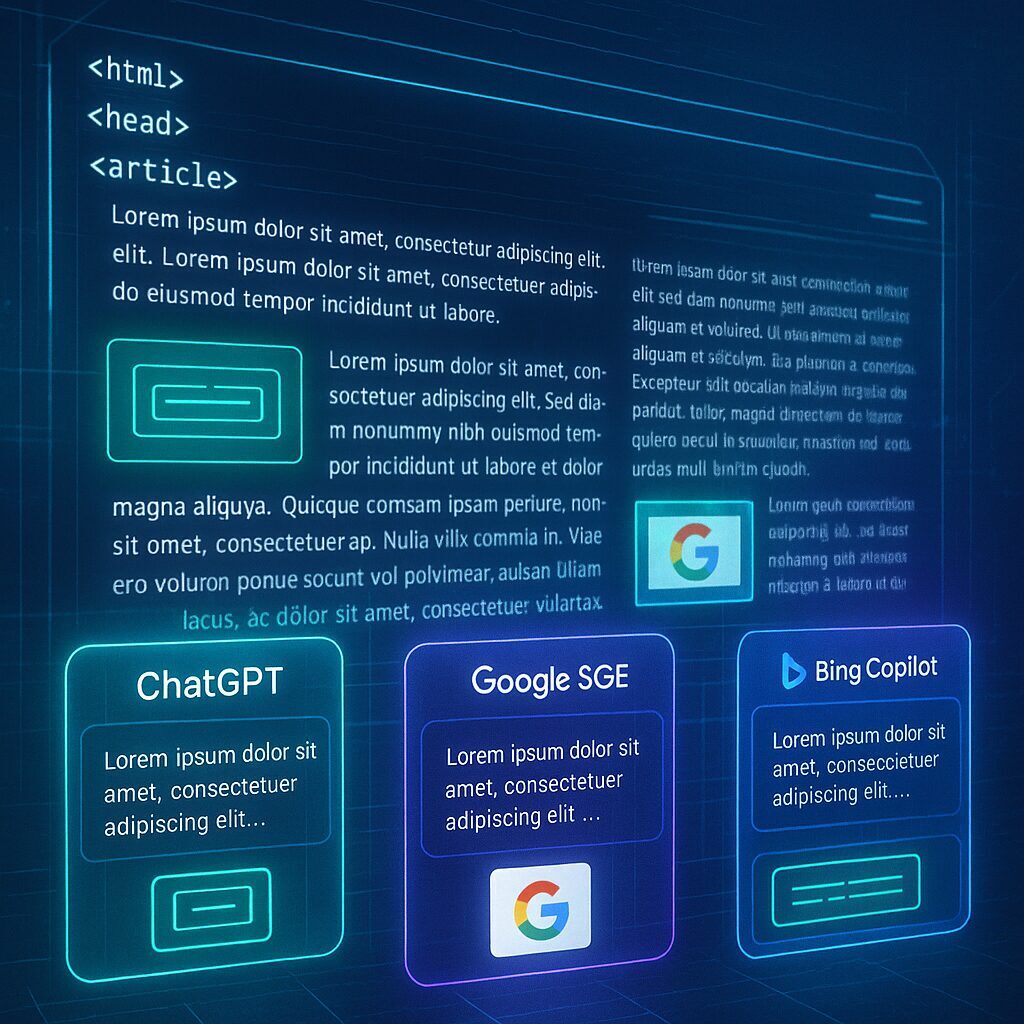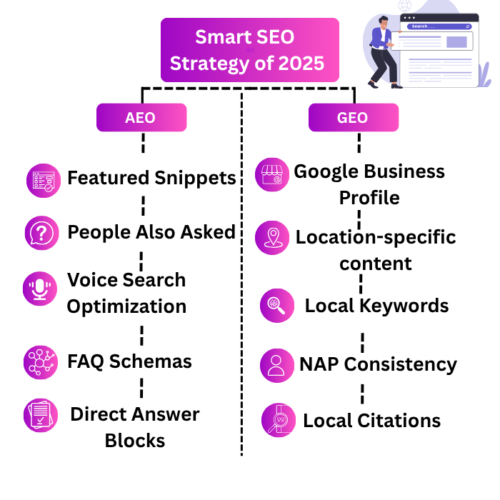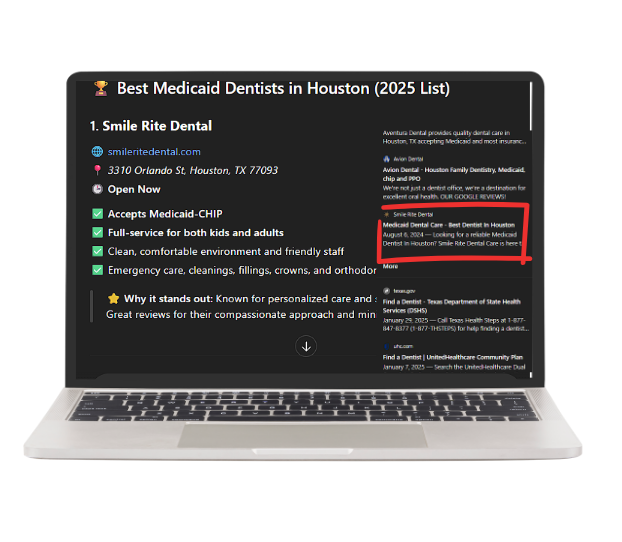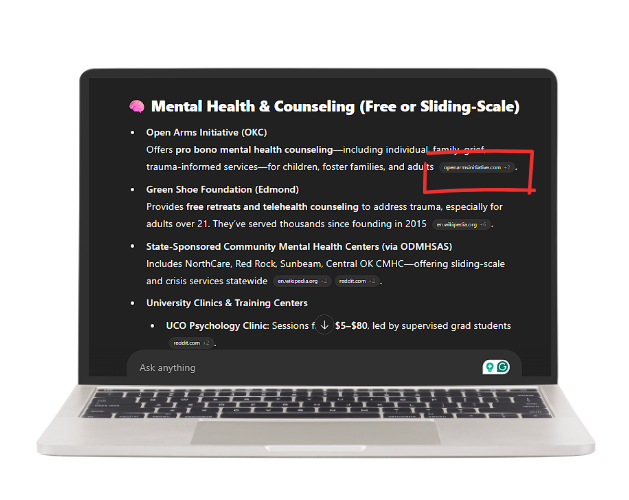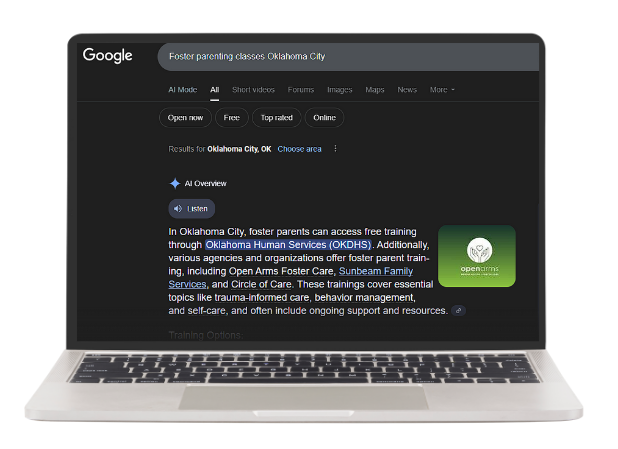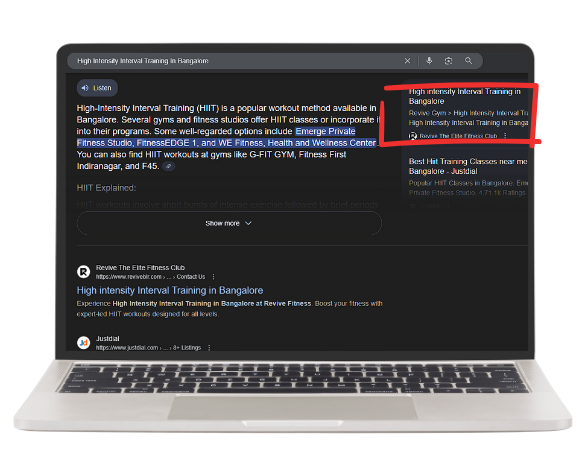How AEO and GEO Trends Are Affecting Digital Marketing
The New Era of Search
For years, digital marketers lived and breathed SEO keywords, backlinks, meta tags, and algorithms. But the landscape is shifting fast. In 2025, two emerging forces are reshaping the conversation: Answer Engine Optimization (AEO) and Generative Engine Optimization (GEO). These trends aren’t just buzzwords; they reflect how people search, how machines respond, and ultimately, how brands are discovered online.
Think about it: when you ask Siri a question, you don’t want ten blue links, you want the answer. And when you chat with a generative AI tool, you expect not only information but context, recommendations, even creativity. That’s the seismic shift happening right now.
What Exactly Is Answer Engine Optimization (AEO)?
Answer Engine Optimization is about tailoring your content so that digital assistants, AI-driven search tools, and voice queries deliver your answer directly. Instead of competing for a spot on page one, businesses are competing for the answer box, the snippet, or the voice response.
AEO trends in digital marketing show that structured data, FAQs, and context-rich content are becoming the foundation. For example, a local dental clinic that structures its site with clear Q&A (“What’s the cost of dental implants in Houston?”) has a better chance of being voiced aloud by Alexa or displayed as a Google snippet.
In practice, this means digital marketers must write content with intent in mind: short, precise, conversational, and backed with authority.
What Is Generative Engine Optimization (GEO)?
While AEO focuses on direct answers, Generative Engine Optimization (GEO) deals with how AI tools like ChatGPT, Perplexity, or Google’s Gemini use content to generate responses.
GEO trends in digital marketing are rapidly growing because people aren’t just searching anymore; they’re conversing with machines. Generative AI in digital marketing pulls data from multiple sources and synthesizes it into unique outputs. If your brand’s content isn’t structured, discoverable, or contextually relevant, it might be ignored in this generative ecosystem.
For example, an e-commerce store that produces detailed product guides, comparisons, and long-form thought leadership will have a stronger chance of being referenced in generative outputs than one that simply posts thin product descriptions.
The Impact of AEO and GEO on SEO
The impact of AEO and GEO on SEO is undeniable. Traditional search optimization title tags, backlinks, and H1 structures still matters, but they’re no longer the only game in town.
Marketers now need to ask:
- Will this content answer a direct query in one clear line? (AEO)
- Will this content be valuable enough for AI systems to weave into a broader generative answer? (GEO)
One practical example: a travel blog writing “Top 10 Things to Do in Bali” should now also provide structured sections like “Best time to visit Bali” and “Average costs.” These fragments can be pulled into voice search answers and AI-generated itineraries. Without that detail, the blog risks invisibility.
AI-Driven Search Optimization in Action
AI-driven search optimization is less about stuffing keywords and more about predicting intent. Imagine a user asks, “What’s the healthiest breakfast option for weight loss?” A traditional SEO strategy might optimize for “weight loss breakfast.” An AEO-focused strategy provides a precise answer like “Oatmeal with berries and Greek yogurt is a nutrient-rich breakfast for weight loss.” Meanwhile, GEO-focused content goes further, offering meal plans, recipes, and lifestyle tips that AI can integrate into personalized recommendations.
The difference is subtle but game-changing: your content must serve both the immediate answer and the broader context.
Next-Generation SEO Strategies for 2025
As we move deeper into this shift, here are some next-generation SEO strategies 2025 marketers can’t afford to ignore:
- Structured Content – Schema markup, FAQ sections, and scannable answers make content AEO-friendly.
- Context-Rich Content – Long-form, detailed articles with examples feed GEO systems better than thin posts.
- Conversational Tone – Write like you’re answering a question from a friend—this aligns with voice and AI queries.
- Multi-Format Assets – Videos, podcasts, and infographics can be indexed and pulled into AI responses.
- Authority Building – Brands with consistent expertise and trustworthiness will be preferred by AI systems.
- User-Centric Focus – Instead of chasing algorithms, focus on what genuinely helps users; AI rewards relevance.
How AEO and GEO Change Online Visibility
Perhaps the biggest challenge for businesses is visibility. Ten years ago, ranking number one on Google meant thousands of clicks. Today, the “number one” spot may be a single AI-generated answer, with no visible credit.
This is both a risk and an opportunity. Brands that embrace AEO and GEO can secure visibility in new ways. For example, a skincare brand with detailed product guides might not appear in a traditional search result but could be recommended directly by an AI-driven assistant.
The takeaway: visibility is no longer just about being on page one. It’s about being in the conversation.
The Future of Digital Marketing with AEO and GEO
So where are we headed? The future of digital marketing with AEO and GEO is about adaptation. Marketers must think like educators and problem-solvers, not just promoters. The more your content helps people quick answers for AEO, deep insights for GEO the more machines will favour it.
An anecdote here: a small boutique agency in Texas reported that after restructuring their client’s blog posts into Q&A style entries and detailed guides, voice search traffic increased by 35%, and mentions in generative platforms like ChatGPT also climbed. That’s the future unfolding before our eyes.
Final Thoughts: Preparing for the Shift
If SEO was about pleasing algorithms, AEO and GEO are about pleasing people through machines. These aren’t passing fads; they are rewiring the internet.
The brands that thrive in 2025 will be the ones that stop treating SEO as a checkbox exercise and start treating it as a conversation with their audience. Structured answers, authoritative insights, and multi-format content will become the gold standard.
Whether you’re a startup or an established enterprise, embracing AEO and GEO is no longer optional, it is survival in the new age of search.



